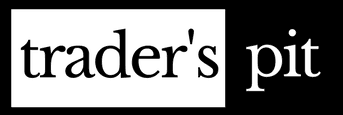What is Put Call Ratio – PCR in simple words?
The put call ratio is a technical indicator that measures the trading volume of put options relative to call options to gauge overall sentiment in the market. It is calculated by dividing the number of traded put options by the number of traded call options over a given period.
You need Option Chain data to calculate the PCR Ratio. You can find the Options Chain of Nifty/Banknifty on the NSE India Website.
What is the PCR Ratio for bearish sentiment?
A high put call ratio over 0.70 indicates bearish sentiment, as it shows more put options trading relative to call options. Traders are buying more puts to speculate on downward price movement or protect long positions. This shows skepticism and caution about current market conditions.
What is the PCR Ratio for bullish sentiment?
A low put call ratio under 0.40 signals bullish sentiment, as more market participants are buying calls anticipating prices to rise. It reflects optimism and confidence in the market’s upside potential. However, an extremely low ratio under 0.20 could signal overbought conditions.
How to use the Put Call Ratio for trading?
A rising put call ratio indicates sentiment is shifting towards more defensive positioning, as traders hedge or speculate for a market decline. A falling ratio reflects more bullish risk appetite, as upside call buying increases.
The put call ratio is considered a contrarian indicator for futures, indices and equity markets. When the ratio reaches extremes in either direction, it suggests a trend reversal may be ahead. For example, a very high reading could mark a bottom, as excessive pessimism is exhausted.
Traders may analyze the put call ratio’s moving averages to identify crossover points and overbought or oversold signals. The 21-day moving average acts as a baseline, while the 5-day average tracks short-term shifts in sentiment.
There are variations like the equity-only PCR, which filters out volatility-linked index options. The PCR can be applied to various markets like indices, commodities, forex and cryptocurrencies. Used with other indicators, it provides insights into overall options positioning and market psychology.
In summary, the put-call ratio gauges bullish or bearish sentiment by comparing put and call volumes. It acts as a contrarian indicator to spot extremes and potential turning points in the markets. Monitoring the PCR along with price action can aid trading decisions during different market environments.
How is the PCR Ratio Calculated?
The put call ratio is calculated by taking the trading volume of put options and dividing it by the trading volume of call options for a particular asset over a specific time period.
For example, as per the sample data provided in the post:
- The put option volume on Nifty for the day is 2,95,000 contracts
- The call option volume on Nifty for the day is 6,90,000 contracts
To calculate the put call ratio:
Put Option Volume = 2,95,000
Call Option Volume = 6,90,000
Put Call Ratio = Put Option Volume / Call Option Volume
= 2,95,000 / 6,90,000
= 0.43
So the put call ratio for this example comes out to be 0.43, which indicates bullish sentiment. This is because the call option volume (6,90,000 contracts) is significantly higher than the put option volume (2,95,000 contracts).
A low put call ratio below 0.50 typically reflects optimism and buying interest in the market, as more traders are buying calls expecting prices to rise.
The ratio can be calculated over different time frames (daily, weekly, monthly etc) and for various underlying assets like indices, stocks, commodities etc. Looking at the trend of the put call ratio helps gauge how overall market sentiment is shifting.
Limitations of Put Call Ratio
One of the main limitations of the put call ratio (PCR) is that it does not always accurately capture the nuances of market sentiment. The PCR has several other drawbacks that traders should be aware of:
- The PCR is not available for many individual stocks because they do not have options trading. This restricts its use to only indexes and some large cap stocks.
- While the PCR is a useful contrarian indicator, traders should not solely rely on it to determine market direction. Other factors like price action, volatility, volume etc. need to be considered as well.
- For the most effective signals, the PCR should be used in conjunction with other technical indicators to confirm market sentiment. Looking at the PCR in isolation may lead to inaccurate conclusions.
- Traders need to know how to properly analyze the PCR chart. Subtle shifts can be an early indicator of changing sentiment, so nuance in the indicator is important.
In summary, the put call ratio has some limitations in terms of representation and scope. Traders should supplement the PCR with other indicators, perform thorough chart analysis, and factor in additional market variables when using it for decision making. It is most effective when used as part of a robust trading strategy rather than in isolation. Being aware of its limitations allows traders to properly incorporate the PCR in their overall market analysis.
